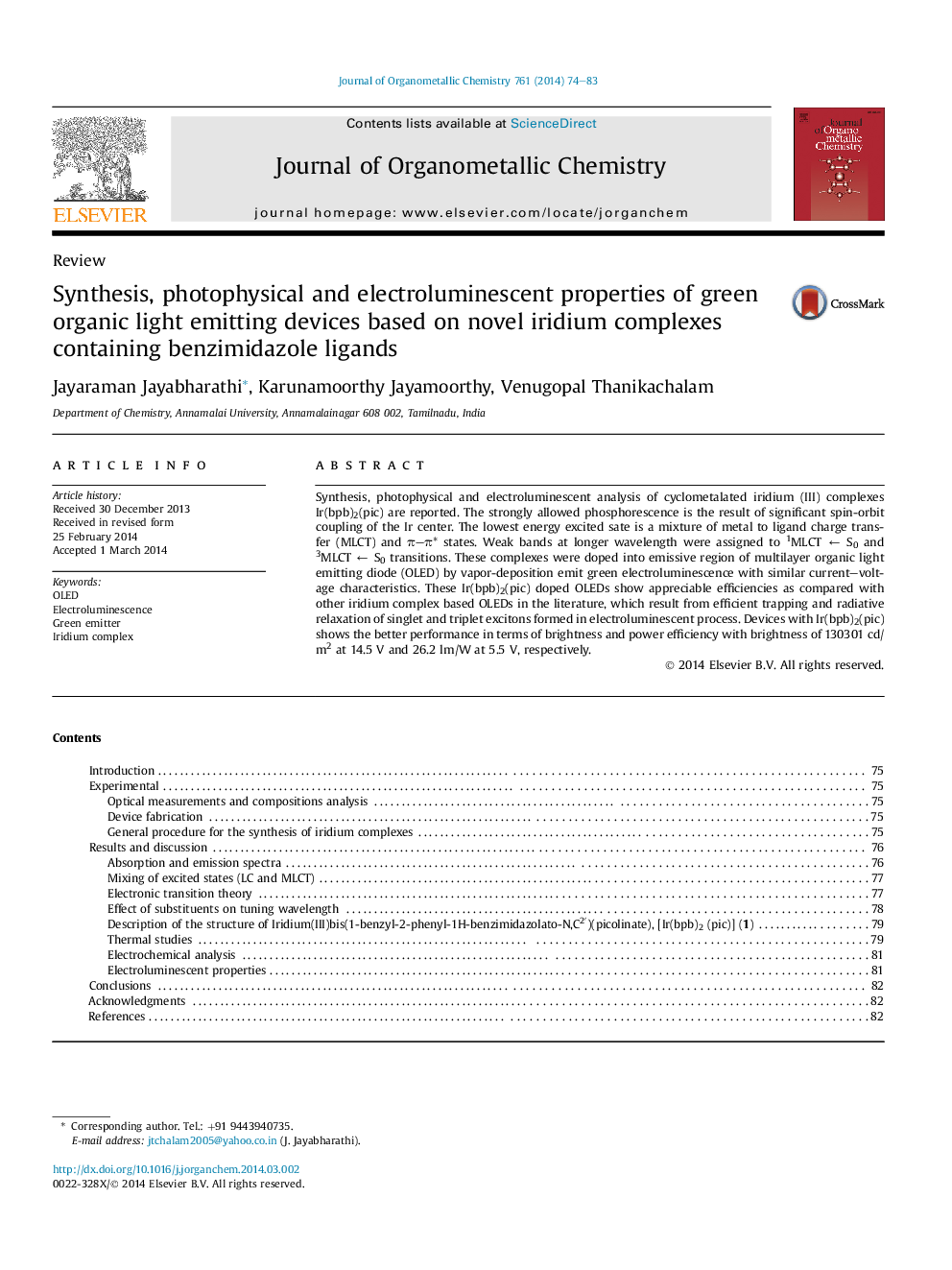| Article ID | Journal | Published Year | Pages | File Type |
|---|---|---|---|---|
| 1322366 | Journal of Organometallic Chemistry | 2014 | 10 Pages |
•Phosphorescence of iridium complexes originates from LC and MLCT excited states.•Narrower Eg causes reduction of driving voltage due to charge transport ability.•Brightness of Ir(bpb)2(pic) 130301 cd/m2 twice that of Ir(pbi)2(pic) 46393 cd/m2.
Synthesis, photophysical and electroluminescent analysis of cyclometalated iridium (III) complexes Ir(bpb)2(pic) are reported. The strongly allowed phosphorescence is the result of significant spin-orbit coupling of the Ir center. The lowest energy excited sate is a mixture of metal to ligand charge transfer (MLCT) and π–π* states. Weak bands at longer wavelength were assigned to 1MLCT ← S0 and 3MLCT ← S0 transitions. These complexes were doped into emissive region of multilayer organic light emitting diode (OLED) by vapor-deposition emit green electroluminescence with similar current–voltage characteristics. These Ir(bpb)2(pic) doped OLEDs show appreciable efficiencies as compared with other iridium complex based OLEDs in the literature, which result from efficient trapping and radiative relaxation of singlet and triplet excitons formed in electroluminescent process. Devices with Ir(bpb)2(pic) shows the better performance in terms of brightness and power efficiency with brightness of 130301 cd/m2 at 14.5 V and 26.2 lm/W at 5.5 V, respectively.
Graphical abstractIntensity of 3MLCT ← S0 transition is close with 1MLCT ← S0 transition due to spin-orbit coupling. Phosphorescence from 3π–π* and 3MLCT display vibronic and broad shapes, respectively. Fluoro substituent increases absorption and emission energies by stabilizing HOMO level. Devices with Ir(bpb)2 (pic) and Ir(fbfpb)2(pic)show brightness of 130,301 cd/m2 and103,156 cd/m2, respectively.Figure optionsDownload full-size imageDownload as PowerPoint slide
